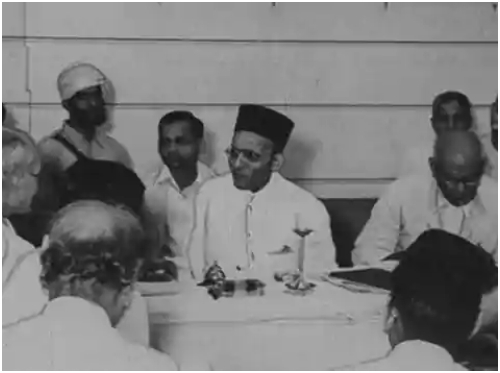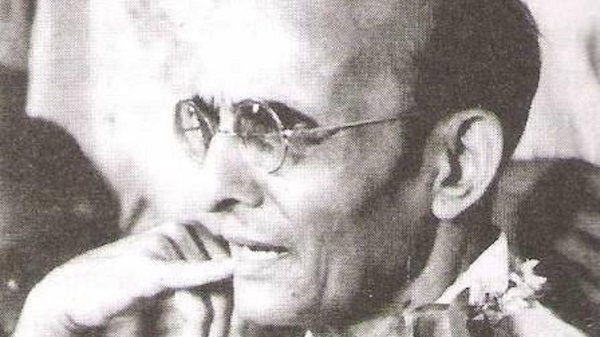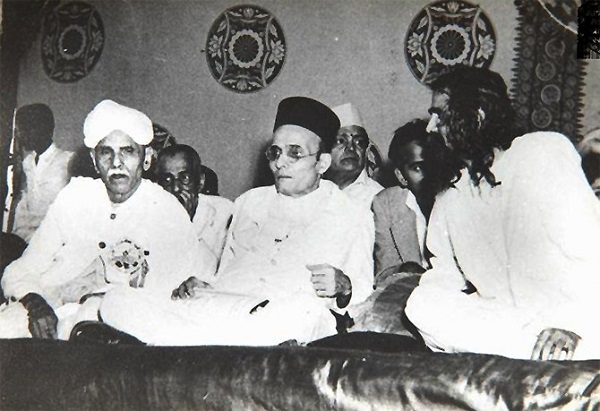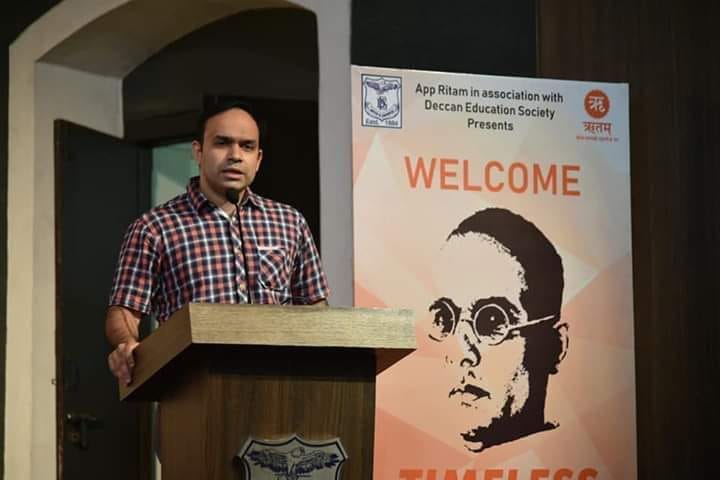Veer Savarkar- A Social Revolutionary
Total Views |
Famous biographer Dhananjay Keer explains the difference between social reformer and social revolutionary- "A reformer rebuilds the old structure. A revolutionary blows up the old building and builds a new one." (Keer, Dhananjay. Dr.Ambedkar: Life and Mission, page 59) Veer Savarkar was not a mere social reformer, he was an action-oriented active social revolutionary.
According to Savarkar, the Hindu society was bound by seven Indigenous shackles (Bandi or Sapta-Bedya). He rigorously fought to break these seven Indigenous shackles just as much as he strived to overthrow the foreign shackle of India by the British. Savarkar stated, ‘Scripture-based caste division is a mental illness. It gets cured instantly when the mind refuses to accept it. The seven indigenous shackles whose breaking will liberate this Hindu Nation from the illness and demonic possession.’ (Samagra Savarkar Vangmay- Vol. 3, p. 497-499)

These Seven Indigenous Shackles were:
1. Prohibition of rites sanctioned by the Vedas (Vedokta-bandi)- All Hindus would have equal rights and access to the Vedas.
2. Prohibition of pursuing certain occupations (Vyavasay-bandi)- A person should have the freedom to pursue the profession which he or she were best at irrespective of what caste the person was born into. A person should not be prohibited from pursuing a particular profession just because he or she was not born in a particular caste.
3. Prohibition of touch of certain castes (Sparsha-bandi)- Savarkar was of the view that untouchability of a caste must be abolished as it was a curse on humanity.
4. Prohibition of sea-faring (Sindhu-bandi)- Travel to a foreign land should not lead to a community boycott.
5. Prohibition of reconversion to the Hindu fold (Shuddhi-bandi)- Those who had previously relinquished the Hindu religion or those born in a different religion should be allowed to come back into the Hindu fold.
6. Prohibition of inter-dining with certain castes (Roti-bandi)- Savarkar ridiculed the idea that eating a certain kind of food damages your religion. He was of the opinion that 'Religion rests in one's heart and not in the stomach'. Savarkar took the lead to arrange several community dining in Ratnagiri.
7. Prohibition of inter-caste marriages (Beti-bandi)- Caste should not be criteria for marriage. Qualities, civility, love and health should be the driving force while choosing a life partner.
He exhorted people that while they might forget his leap into sea at Marseilles, but they should not forget his thoughts about social reform. Such was the importance he lay on social reforms. This makes it clear that Savarkar was much more concerned about his social work rather than one of the most famous events in his life, namely his escape at Marseille. In 1941, Savarkar declared that if freedom was won without achieving social reform, it would not last even for three days. (Akhand Hindusthan Ladhaa Parva, p. 202)

To put forth his social opinions, he wrote a lot of literature, including the Marathi play titled Sangeet Ushap, books such as Jaatyu-Uchhedak Nibandh (Caste Abolition Essays), Ksha Kirane (a book on X-rays, aimed at developing a scientific view) and Vidnyan-Nishtha Nibandh (Scientific Temper Essays). He employed varied genres of literature, including poems and stories, to propound his opinions on social reforms. Savarkar was an activity-oriented intellectual. He didn’t merely propagate his opinions but acted upon them.
He successfully implemented social reforms which included inter-dining, co-education for people of all castes including ex-untouchables, celebrating festivals at homes of all castes including ex-untouchables, a musical band run by ex-untouchables financed by bank loans, the Kirtans during Ganesh festivals by members of the Bhangi community, Harijan Bhajan Mandal, speeches by women and various other initiatives.
On 1st May 1933, Savarkar started a Pan Hindu Cafe in the premises of the Patitpavan temple which was open to all Hindus. Ex-untouchables served the food here and it was a condition for anyone coming to meet Savarkar that they should have tea at this Cafe before meeting Savarkar. The names of all those who visited and had tea in this Cafe were recorded in notebook.
In 1931, the Patitpavan temple was established with the financial help from Bhagoji Seth Keer and under the leadership of Savarkar which was open to all Hindus and it had on its trust representation from all castes including those from the ex-untouchable caste. The Patitpavan temple was constructed with the idea that the practise of community prayers at the temple would help resolve the issue at the other temples. (SSV, Vol- 3, Page 492)
Savarkar taught Gayatri Mantra, the sacred privilege enjoyed till then by the Brahmins exclusively, to all ex-untouchables and a competition of chanting Gayatri Mantra was organized during this Pan-Hindu Ganpati festival in which winner will be getting reward of ₹ 5/- sponsored by Adv. Mishal. It was won by Shivu Chavhan from Bhangi community. He sang Vedic hymns and Gayatri Mantra. Echoes of event resounded in London papers too. (Ratnagiri Hindu Sabheche Prativrutta- Vol 2, page 47)

Savarkar didn’t become emotional when he was sentenced to fifty years’ life imprisonment. However, he did become very emotional while writing a poem on ex-untouchables who were not allowed to enter the temple. The words ran thus:
‘मला देवाचे दर्शन घेऊ द्या, डोळे भरून देवास मला पाहू द्या’
“Please allow me to see my God, O everyone….. Let me have his Darshan”
While writing this poem, his eyes were filled with tears. (Bapat, N.S., Smrutipushpe, Page 86)
Savarkar drew a meagre pension from the British government and had little means of livelihood, yet he adopted a girl from the ex-untouchable community. In 1921, the Ratnagiri Hindusabha whose work Savarkar had undertaken had only Rs 1.25/- as its balance which shows the difficult financial, social and political environment in which Savarkar carried out his social work.
In a letter to his brother Narayanrao on 6th July 1920, Savarkar writes "I feel the need to rebel against caste discrimination and untouchability as much as I feel the need to fight against foreign occupation of India". Even while undergoing the prison sentence of 50 years in the Andamans, Savarkar was worried about caste discrimination and untouchability. He worked in the field of eradicating untouchability even while in the Andman.
In his letter to the editor V.N. Barve of the 'Dalit Sevak' published from Dhule dates 1st January 1947, Savarkar says "If at all I regain my health, then, I would like to dedicate at least 2 years to the cause of eradication of untouchability and caste discrimination' and make another pan-India assault on these practices. I feel that this is important from the point of view of Hindu unity and human unity". This implies that after his release from Ratnagiri and in the heat of politics and even when India was on the verge of gaining freedom, Savarkar was interested in abolition of casteism from a human point of view. (Savarkar, S. S. alias Balarao. Swatyantraveer Savarkar- Akhand Hindusthan Ladha Parva, Veer Savarkar Publication, 1976, Page 369-370)
.
.





